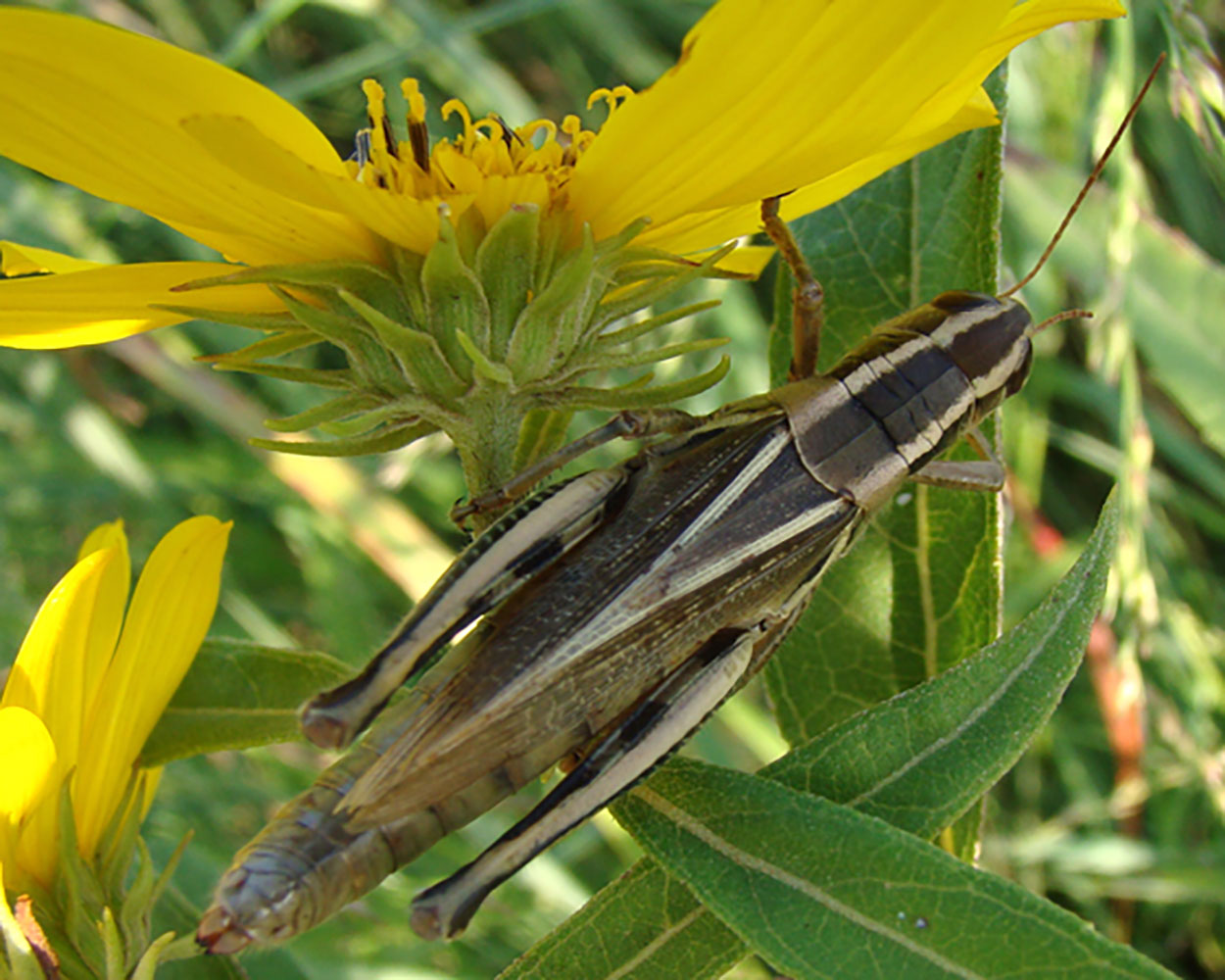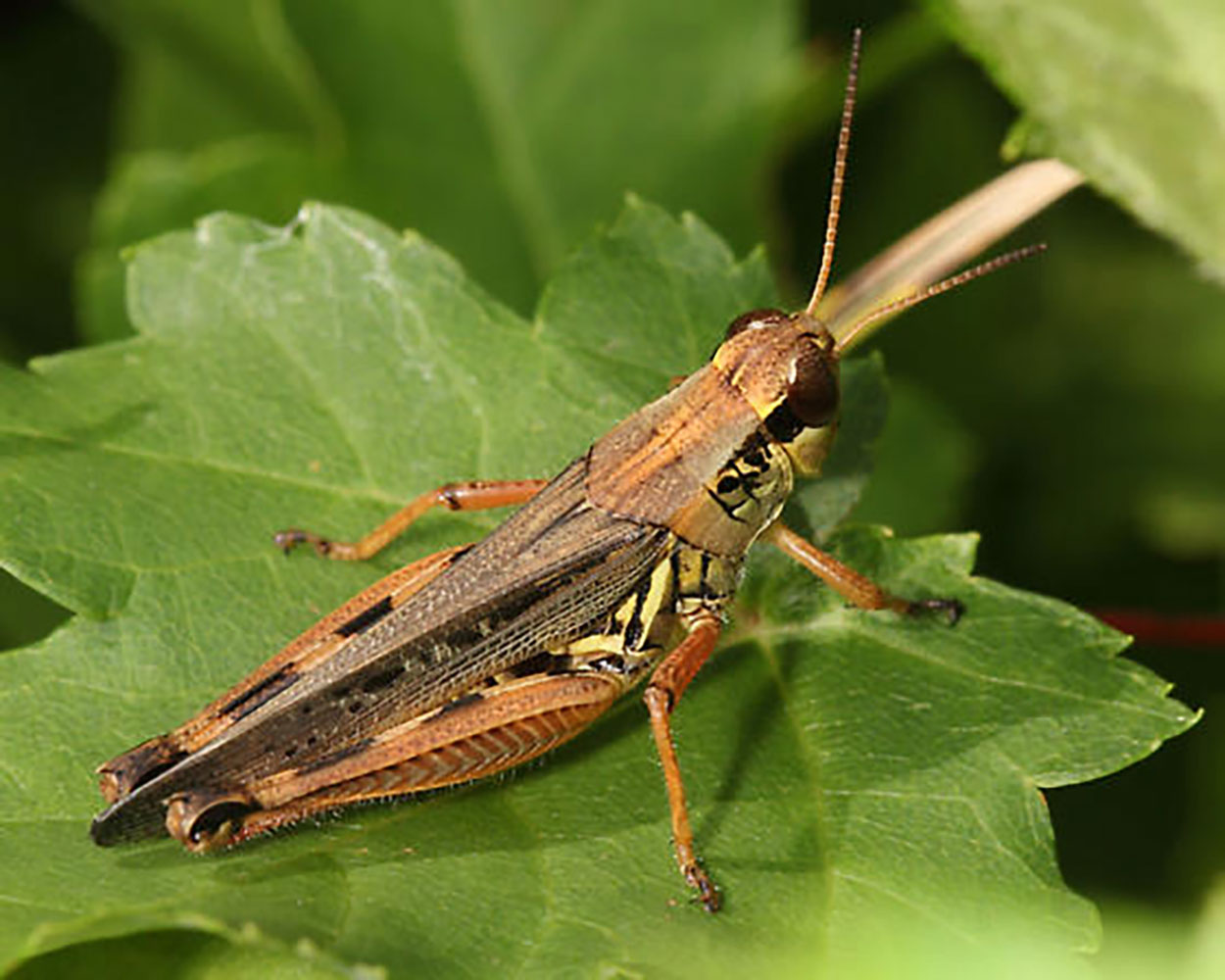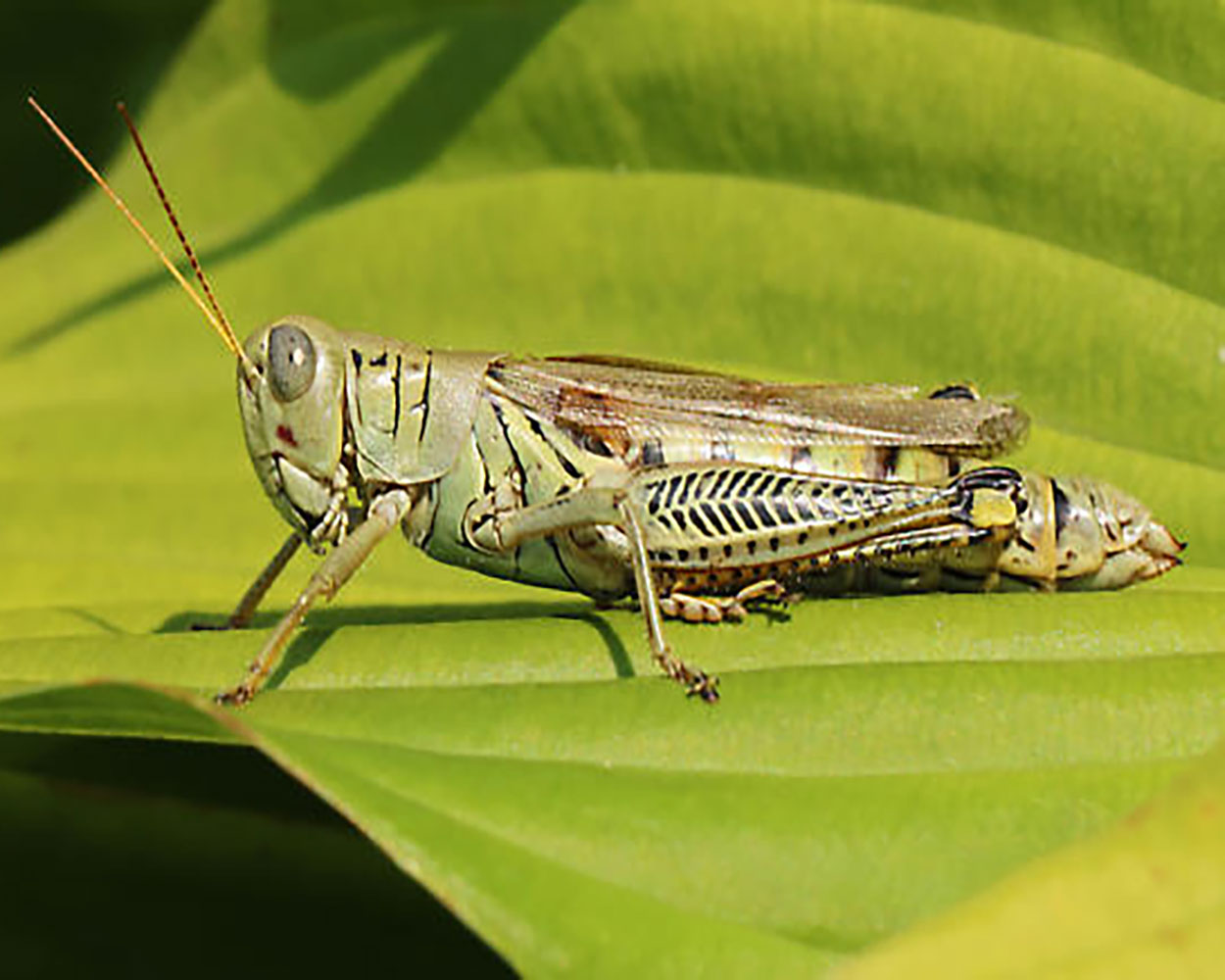Written with contributions by Shelby Pritchard, former SDSU Extension Pest Management Specialist.
Originally Submitted: September 23, 2022
Gardeners across the state of South Dakota are well aware of the potential pest problems that can occur throughout the growing season. With a relatively dry summer, it should be no surprise that grasshoppers are an issue in gardens. There are three main species of grasshoppers that we monitor for in South Dakota, which include the two-striped (Melanoplus bivittatus), redlegged (Melanoplus femurrubrum), and differential grasshopper (Melanoplus differentialis). This article will focus specifically on grasshoppers feeding on tomato plants and ways to manage populations.
Biology of Grasshoppers
Lifecycle: Grasshoppers belong to the order Orthoptera within the family Acrididae. All grasshoppers undergo a lifecycle known as incomplete metamorphosis. This type of life cycle has three stages: egg, nymph, and adult. In South Dakota, grasshoppers typically have one generation per year. Female grasshoppers lay eggs in small clusters, known as “pods,” under the soil surface during late summer and early fall. The eggs are protected from environmental elements and are the overwintering stage. Different species of grasshopper hatch at different times depending on the weather, specifically temperature. Two-striped grasshopper nymphs emerge around mid-May, while redlegged and differential grasshopper nymphs tend to emerge a few weeks after. grasshopper nymphs undergo five growth stages before maturity is reached, which takes a little over a month depending on environmental factors and food availability. Once maturity is reached, the adults will have fully grown wings. Adult grasshoppers mate and lay eggs after around two weeks and continue to live for up to three months.
Identification
Two-Striped

Two-striped grasshoppers have two light yellow lines that run from their head down to their abdomen (Figure 1). The two lines converge near the middle of the wings. They are a mixture of tan and brown in color and are approximately 1 to 1 ½ inches in length.
Redlegged

Redlegged grasshoppers can range in color from tan to green, with a variety of black markings (Figure 2). They are approximately 2/3 to 1 inch in length. They get their name due to the red coloration on a segment of their hind legs.
Differential

Differential grasshoppers range in color from green to yellow and have distinct black chevron markings along their hind legs (Figure 3). They vary in size from 1 1/8 to 1 ½ inches in length.
Feeding Behavior

Both grasshopper nymphs and adults use their chewing mouthparts to consume leaves, stems, flowers, and fruits. Most grasshoppers are polyphagous herbivores, meaning that they can feed on a wide variety of plants across a wide range of landscapes, including crops, rangeland, and gardens (Figure 4). The level of defoliation caused by grasshoppers increases with higher temperatures, which can typically be observed during drought like conditions. Gardens provide an abundance of food, which is why it’s important to monitor for grasshoppers throughout the growing season.
Management
If grasshoppers are creating problems in your garden, such as feeding on your tomato plants, the best thing to do is to harvest the fruit early and allow them to ripen safely indoors. Even if grasshopper feeding is only minor, it can still create an increased susceptibility to feeding damage from other insect pests, as well and fungal diseases. Some management approaches for grasshoppers later in the growing season can include:
- Watering areas around the garden to eliminate feeding pressure on garden plants.
- Allowing grass along the edges of the garden and yard to grow long in order to create a new food source other than the garden.
- Removing individual grasshoppers by hand and terminating them.
- Encouraging birds to feed on grasshoppers by placing a couple bird feeders near the garden.
- Planning ahead for the next season and planting tomato varieties that are able to produce fruit earlier in the season.
- Consistently monitoring for grasshoppers and other known insect pests throughout the growing season.
- Tilling the garden at the end of the season to expose and kill off overwintering grasshopper eggs.
Adult grasshoppers are difficult to control with the use of insecticides, and multiple applications typically need to occur in order to reduce the populations. In all cases, make sure to read the insecticide labels and follow all label recommendations. Pay special attention to any pre-harvest intervals as garden produce ripens. This is the time period between application and when it is safe to harvest the produce for consumption.
References
- Hein, G. L., J. B. Campbell, and R. C. Seymour. 2006. A guide to grasshopper control in yards and gardens. University of Nebraska-Lincoln Extension.
- Varenhorst, A., A. Bachmann, P. Rozeboom, and P. Wagner. 2020. Grasshoppers: When to manage them in a yard and garden. South Dakota State University Extension.


